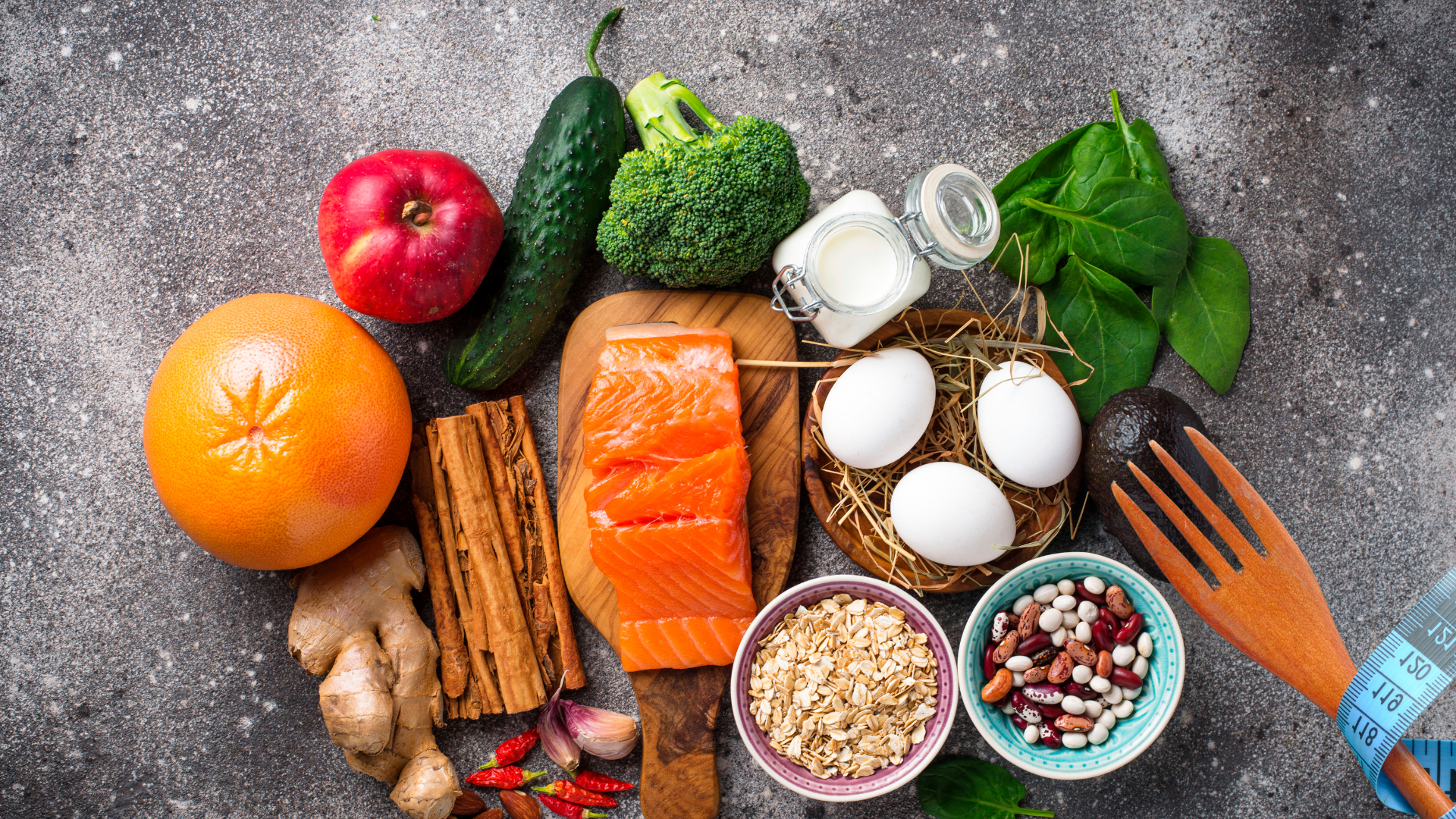Weight Loss Made Easy: Foods You Can Eat Guilt-Free!


What are "Guilt-Free" Weight Loss Foods?
"Guilt-free foods" refer to those nutrient-rich, low-calorie, easily digestible foods that you can consume with confidence. These foods typically contain high fiber, quality protein, and healthy fats, while being low in sugar and fat, helping you satisfy your taste buds while maintaining energy balance and avoiding excessive calorie intake.
Why Choose Low-Calorie, High-Nutrition Foods?
● Weight Control: Low-calorie foods can help you reduce total calorie intake while maintaining satiety, thereby promoting fat burning.
● Nutritional Supplementation: High-nutrition foods ensure you get the various vitamins and minerals your body needs while losing fat, avoiding malnutrition caused by dieting.
● Maintaining Energy and Mood: Consuming balanced nutrition can help you maintain energy during weight loss and avoid low mood or fatigue.
How Do These "Guilt-Free" Foods Help Control Weight?
- Increase Satiety: Foods rich in fiber and protein can make you feel full for longer periods, reducing unnecessary snacking and overeating.
- Regulate Blood Sugar Levels: Low GI foods help stabilize blood sugar, avoiding rapid spikes followed by quick drops, making you feel less hungry.
- Reduce Fat Accumulation: Although healthy fats have higher fat content, they are healthy fats that, when consumed in moderation, help with fat metabolism—the benefits far outweigh the drawbacks.
- Support Metabolism: Rich protein and trace elements can promote body metabolism and improve fat burning efficiency.
Super Practical Food Recommendations: Nutritious and Low-Calorie
When looking for foods suitable for consumption during weight loss, it's crucial to meet your body's nutritional needs while avoiding excessive calorie intake. Below are several categories of healthy ingredients that are both nutritionally rich and low in calories, helping you easily create an efficient fat-loss meal plan.
1. Leafy Green Vegetables
Spinach, kale, lettuce, amaranth, romaine lettuce, Chinese broccoli, purslane, cauliflower leaves, baby bok choy, and cilantro are green leafy vegetables rich in vitamins, minerals, and antioxidants, while being extremely low in calories. Their fiber helps improve gut health and increase satiety.
Nutritional Value and Calories: These vegetables are low in protein and extremely low in calories (usually around 20-30 calories per 100 grams), but rich in iron, calcium, vitamins A, C, and K.
Consumption Suggestions: Can be used as a salad base, seasoned with olive oil and lemon juice, or paired with chicken breast and other lean proteins to make healthy fat-loss dishes.
2. High-Water Content Fruits
Watermelon, grapefruit, strawberries, orange, blueberries, kiwi, cantaloupe, plums, and honeydew have high water content and moderate sweetness, satisfying cravings without bringing excessive calories.
Benefits of Moderate Consumption:
- Replenish hydration, helping body detoxification and maintaining metabolism
- Natural sugars provide quick energy, but control portions to avoid excessive sugar intake
- Rich in antioxidants, helping with anti-inflammation and boosting immunity
Suggestions: Enjoy one portion daily in moderation, such as a bowl of strawberries or a slice of watermelon, as a between-meal snack or after-meal fruit—both delicious and healthy.
3. Lean Proteins
Chicken breast, turkey, tofu, shrimp, salmon, tuna, crayfish, lean beef, etc., are all high-quality protein sources.
Provide Satiety and Promote Muscle Repair: Protein enhances satiety, reduces unnecessary snacking, and is crucial for maintaining and building muscle, helping to boost basal metabolic rate.
Suggestions: Choose grilling, boiling, or steaming cooking methods, avoid frying or excessive seasonings, and pair with various vegetables to create diverse fat-loss meals.
4. Whole Grains
Oats, brown rice, quinoa, wheat germ, black rice, millet, red rice, and rye are unrefined grains rich in fiber and protein that regulate blood sugar levels.
Increase Satiety and Regulate Blood Sugar: Whole grain foods slowly release energy, keeping you full for extended periods, and help control blood sugar and insulin fluctuations, reducing fat accumulation.
Consumption Suggestions: For breakfast, use oats with a small amount of fruit or nuts as a good energy source; for lunch or dinner, use brown rice or quinoa paired with lean meat and vegetables.
5. Healthy Fats
Almonds, cashews, walnuts, flaxseeds, chia seeds, pumpkin seeds, as well as avocado, olive oil, and flaxseed oil, though high in fat content, are primarily healthy fats.
Moderate Intake to Satisfy Taste Buds While Controlling Fat Intake: These fats not only satisfy cravings but also provide Omega-3 and Omega-6 fatty acids, helping with anti-inflammation and promoting heart health.
Suggestions: Consume nuts in small amounts daily as snacks or add to salads and oats—both delicious and beneficial for health.
How to Cleverly Combine and Consume These Foods
In daily diet, cleverly combining and reasonably consuming these nutritious, low-calorie foods can help you enjoy delicious flavors while achieving fat-loss effects.
When making light salads, use green leafy vegetables like spinach, kale, and baby bok choy as a base, add colorful fruits like strawberries, oranges, and kiwi to increase vitamins and enhance flavor. Use small amounts of nuts, such as walnuts or almonds, to provide healthy fats, and season with olive oil combined with lemon juice or apple cider vinegar, avoiding high-calorie dressings. Properly combining different textures and colors of ingredients not only enhances visual appeal but also satisfies nutritional diversity.
Making healthy fruit and vegetable soups is also a simple and practical approach. You can use fruits like watermelon, grapefruit, and blueberries, mixed with fresh green leafy vegetables like lettuce and cilantro, blended with vegetable juice or a little water to create a rich yet refreshing soup base. Add some whole grains like oats or quinoa to increase satiety and make the soup more nutritious. You can easily make this with a blender, ensuring no added sugar and minimal seasoning, keeping the taste naturally pure.
For cooking techniques, simple steaming and roasting methods are both healthy and preserve the nutritional value of ingredients. When steaming shrimp, chicken breast, or fish fillets, don't cook too long to retain tenderness and nutrition. Using small amounts of olive oil or other healthy oils, when roasting vegetables or lean meat, you can add spices and lemon juice for seasoning—not only rich in flavor but also reducing salt usage.
Portion control is also key to avoiding overconsumption. Use small bowls and plates to serve food, avoid using large utensils, creating a visual "fullness" effect, thus naturally reducing food quantity. At the same time, enjoy food slowly, chew carefully, allowing your body time to feel satiety and avoid overeating.
Weekly Healthy Weight Loss Menu Recommendations
Monday
- Breakfast: Choose Greek yogurt with fresh strawberries and a small amount of nuts—rich in protein and providing abundant antioxidants.
- Lunch: Enjoy grilled chicken breast with mixed vegetable salad, seasoned with olive oil and lemon juice—both healthy and satisfying.
- Dinner: Grilled salmon with steamed broccoli and roasted sweet potato—rich in Omega-3 fatty acids, low-fat and low-calorie.
Tuesday
- Breakfast: Whole wheat toast with scrambled eggs and avocado—rich fats help enhance satiety.
- Lunch: Italian vegetable seafood soup using fresh tomatoes, celery, shrimp, and lentils—both fiber-supplementing and low-calorie.
- Dinner: Turkish grilled meat with green beans and brown rice, providing sustained energy.
Wednesday
- Breakfast: Oats with blueberries and a small amount of coconut flakes—now popular "superfoods" that help with antioxidation and energy supplementation.
- Lunch: Turkey and vegetable wrap using whole wheat tortilla wrapping turkey slices, fresh vegetables, and mustard sauce.
- Dinner: Vegetarian avocado spinach salad with some boiled eggs and roasted walnuts—nutritious and easy to make.
Thursday
- Breakfast: Low-fat cottage cheese with fresh peaches and honey—rich in protein.
- Lunch: Beef tomato pasta using whole wheat pasta and lean beef—control portions.
- Dinner: Steamed cod with lemon juice and roasted mixed vegetables like carrots, onions, and zucchini—low-fat yet satisfying to taste buds.
Friday
- Breakfast: Protein shake providing quality protein.
- Lunch: Power Bowl with brown rice, roasted tofu, avocado, sweet peppers, and spinach—nutritionally balanced.
- Dinner: Steak with roasted asparagus and steamed kale, using seasonings to control salt content, maintaining a low-sodium diet.
Saturday
- Breakfast: Whole grain cereal with low-fat milk and fruit.
- Lunch: Seafood salad with shrimp, lime juice, olive oil, and fresh vegetables—light yet satisfying.
- Dinner: Chicken-stuffed low-fat pizza using cauliflower crust to reduce carb intake while supplementing protein.
Sunday
- Breakfast: Boiled eggs with roasted tomatoes and whole wheat bread—simple yet nutritious.
- Lunch: Roasted potato salad with yogurt dressing and fresh sliced turkey.
- Dinner: Lemongrass-flavored Thai grilled fish with colorful roasted vegetables—exotic flavors that help with healthy fat loss.
Tips
● Try to control portions for each meal, avoid excessive consumption of fried and high-sugar foods
● Consume more high-fiber, antioxidant-rich ingredients like green leafy vegetables and berries
● Combine with regular exercise and adequate sleep to make weight loss twice as effective
● You can freely exchange different meals according to the recipes to adapt to your taste and lifestyle habits
Let XXAI Customize Your Personal Weight Loss Menu
Explore XXAI, an intelligent tool combining 32 powerful AI models! It can customize personal weight loss menus specifically for dieters, helping with scientific and healthy fat loss to easily achieve your ideal body shape. Experience AI's thoughtful guidance to make weight loss simpler and more efficient!
Just a few simple steps to get a personalized plan:
- Tell XXAI your detailed situation, including height, weight, weight loss goals, and other basic information to help AI understand your physical condition and needs.
- Describe your usual eating habits in detail, such as what foods you like to eat, meal timing arrangements, etc., to make the menu more aligned with your lifestyle rhythm.
- Tell XXAI about foods you cannot eat or dislike, such as allergens, forbidden ingredients, or taste preferences.
- Send instructions to let XXAI generate daily nutritionally balanced, low-calorie weight loss menus that match your taste based on your information.
You can also continuously adjust inputs as needed to get more precise personalized customization plans. Easily customize a healthy fat-loss plan exclusively for you—start now and enjoy the fun of scientific weight loss!